SIGGRAPH 2018: Original Narratives

Chair(s):
- Andrés Burbano
-
- Universidad de los Andes
Art Papers Chair(s):
- Angus Graeme Forbes
-
- University of California, Santa Cruz
Location:
Vancouver, British Columbia, Canada
Dates:
August 12th-16th, 2018
Art Show Overview:
Building upon an exciting and eclectic selection of creative practices mediated through technologies that represent the sophistication of our times, the SIGGRAPH 2018 Art Gallery will embrace the narratives of the indigenous communities near Vancouver and throughout Canada as a source of inspiration.
The exhibition will feature contemporary media artworks, art pieces by indigenous communities, and other traces of technologically mediated ludic practices.
The exhibition aims to articulate myth and technology, science and art, the deep past and the computational present, and will coalesce around the theme of Origins. Media and technological creative expressions will explore principles such as the origins of cosmos, the origins of life, the origins of human presence on the planet, the origins of people that occupy the territories of the Americas, and the origins of people who are still living in the vast territories of the Arctic.
Additionally, the venue intends to rekindle the original spark that ignited the collaborative spirit in the community of engineers, scientists, and artists who came together to create the first SIGGRAPH conference in the early 1970s.
Art Papers Overview:
Open Meaningful Dialogue
The Art Papers Program aims to open up meaningful dialogue between artists, scientists, technologists, and industry leaders. The program showcases work that addresses all digital arts modalities, and particularly embraces work that creates and articulates connections with participants in the various SIGGRAPH communities and events, including Technical Papers, Art Gallery, Computer Animation Festival, Emerging Technologies, and the Virtual, Augmented and Mixed Reality Program.
SIGGRAPH 2018 is allowing for shorter papers than in previous years, which will enable us to include more work than ever before. Additionally, for the first time, we will introduce sessions that integrate the Art Gallery artist talks with the Art Papers talks, promoting richer connections between these creative communities.
Finally, to highlight the 50th anniversary of Leonardo, The Journal of the International Society of the Arts, Sciences and Technology (MIT Press), we will honor the innovations and accomplishments of pioneering media artists, researchers, and art historians, while encouraging new works that acknowledge and extend their ideas.
Art Papers are submitted in one of four categories (project description, theory/criticism, methods, or history) and selected by an international jury of scholars, artists, and developers of immersive technologies. Papers are published in a special issue of Leonardo, The Journal of the International Society of the Arts, Sciences and Technology (MIT Press), the publication of which coincides with SIGGRAPH 2018. This marks the 10th year of collaboration between SIGGRAPH and Leonardo, The Journal of the International Society of the Arts, Sciences and Technology (MIT Press).
Art Papers Chair
Angus Forbes
Website:
https://s2018.siggraph.org/conference/conference-overview/art-gallery/
Exhibition Artworks:
-
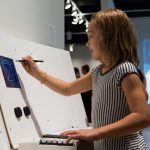
Archaeology of CAD: Interactive Software...
[Daniel Cardoso Llach]
Categories: [Interactive & Monitor-Based] -

Art Systems: 1968 to 2018
[Ernest Edmonds]
Categories: [2D & Wall-Hung] -
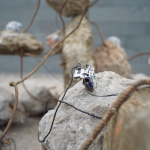
Diastrophisms
[Nicole L’Huillier] [Thomas Sanchez Lengeling]
Categories: [Installation] -
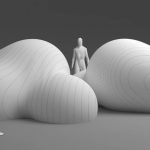
Haven
[Alex Beim]
Categories: [Installation] -

He Ao Hou (A New World)
[Nā ‘Anae Mahiki]
Categories: [Interactive & Monitor-Based] -
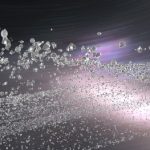
INSTRUMENT | One Antarctic Night
[Lars Berg] [Violet Johnson]
Categories: [Interactive & Monitor-Based] -
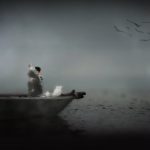
Never Alone: The Art and the People of t...
[Amy Fredeen] [Dima Veryovka]
Categories: [Interactive & Monitor-Based] -

She Falls for Ages
[Skawennati]
Categories: [Animation & Video] -

SOMNIUM
[Danny Bazo] [Marko Peljhan]
Categories: [Installation] -
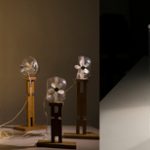
Sopro and Toque (The Blow and Touch)
[Soraya Braz] [Rodrigo Dorta]
Categories: [Interactive & Monitor-Based] -

Transformation Mask
[Shawn Hunt]
Categories: [Installation] [Interactive & Monitor-Based] -
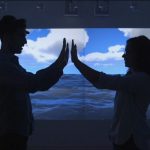
You are the Ocean
[Gabriel Caniglia] [Özge Samanci]
Categories: [Installation] [Interactive & Monitor-Based]
Exhibition Writings and Presentations:
-
Title:
Advertising Positions: Data Portraiture as Aesthetic Critique
- David Gochfeld
- Corrine Brenner
- Kris Layng
- Sebastian Herscher
- Connor Defanti
- Marta Olko
- David Shinn
- Stephanie Riggs
- Clara Fernández-Vara
Author(s):
Category: Paper
Abstract Summary:
Advertising Positions integrates 3D scanning, motion capture, novel image mapping algorithms and custom animation to create data portraits from the advertisements served by online trackers. Project volunteers use bespoke software to harvest the ads they receive over months of browsing. When enough ads have been collected, the volunteer is interviewed, 3D scanned and motion captured. Each ad is then mapped to a single polygon on the textured skin of their virtual avatar. Outcomes have been displayed as 2D/3D images, animations and interactive installations.
Title: Alienating the Familiar with CGI: A Recipe for Making a Full CGI Art House Animated Feature
Author(s):
Category: Paper
Abstract Summary:
This paper is an exploration of the processes used and ideas behind an animated full CGI feature lm project that attempts to reach blockbuster production values, while retaining Art House sensibilities. It examines methods used to achieve these production values in an academic production environment and ways costs can be minimized while high quality levels are retained. It also examines the lm’s status as an Art House project, by comparing its narrative design and use of symbolism to existing works of Art House cinema.
Title: Augmented Fauna and Glass Mutations: A dialogue Between Material and Technique in Glassblowing and 3D Printing
Author(s):
Category: Paper
Abstract Summary:
3D printing allows unprecedented freedom in the design and manufacturing of even the most geometric complex forms—seemingly through a simple click of a button. In comparison, the making of glass is an analogue craftsmanship, coordinating an intricate interplay of individual tools and personal skills, giving shape to a material during the short time of its temperature-based plasticity. The two artworks discussed in this article, Augmented Fauna and Glass Mutations, were created during the artist’s residence at the Pilchuck Glass School and articulate a synthesis between digital work ows and traditional craft processes to establish a digital craftsmanship.
Title: CASTING: Site-Specific Projection Mapping Installation
Author(s):
Category: Paper
Abstract Summary:
This paper investigates CASTING, Yiyun Kang’s site-speci c projection mapping installation at the Victoria and Albert Museum in London, U.K., and the acquisition of the piece by the V&A in the following year. It identi es how CASTING developed distinctive properties in the eld of projected moving-image installation artworks and how these novel characteristics were re ected in the acquisition by the V&A.
Title: Cop to Conductor: Negotiating and Remapping Meaning in Existing Public Art
Author(s):
Category: Paper
Abstract Summary:
There is a crisis in our communities about the tributes to a shared civic life represented in existing public artwork and monuments. Culture wars are being waged herein and appear increasingly unreconcilable. This paper discusses this moment and describes the range of strategies artists and designers have used to remediate these works. It presents a project description of an interactive artwork that suggests innovative approaches in this realm. The author introduces a conceptual model which served as inspiration for the piece that may be useful when discussing and designing
such interventions.
Title: Data Materialization: A Hybrid Process of Crafting a Teapot
Author(s):
Category: Paper
Abstract Summary:
Data materialization is a work ow developed to create 3D objects from data-informed designs. Building upon traditional metalwork and craft, and new technology’s data visualization with generative art, this work ow expresses conceptually relevant data through 3D forms which are fabricated in traditional media. The process allows for the subtle application of data in visual art, allowing the aesthetic allure of the art object or installation to inspire intellectual intrigue. This paper describes the technical and creative process of Modern Dowry, a silver-plated 3D-print teapot on view at the Museum of the City of New York, June 2017–June 2018.
Title: Diastrophisms: Visual and Sound Assembly in Remembrance of an Earthquake
Author(s):
Category: Paper
Abstract Summary:
Diastrophisms is a sound installation with a modular system that sends images through rhythmic patterns. It is built on a set of debris from the Alto Río building that was destroyed by the 27F earthquake in 2010 in Chile. Diastrophisms explores poetical, critical and political crossings between technology and matter in order to raise questions about the relationship between human beings and nature, to consider the construction of memory in a community by questioning the notion of monument, and to imagine new forms of communication in times of crisis.
Title: Digital Heritage: Bringing New Life to the Montreux Jazz Festival’s Audio-Visual Archives with Immersive Installations
Author(s):
Category: Paper
Abstract Summary:
To revive the Montreux Jazz Festival’s archival live-concert footage, three immersive installations were designed using three di erent principles of augmentation, physicality and interaction. The primary aim was to engage the user in a new relationship with digitized heritage. Audience observations indicated a strong emotional connection to the content, the artist and the crowd, as well as the development of new social interactions. Experimentation showed close interaction between the three principles, while the three installations suggested methodologies for reviving audio-visual archives.
Title: Entropy and FatFinger: Challenging the Compulsiveness of Code with Programmatic Anti-Styles
Author(s):
Category: Paper
Abstract Summary:
Coding, the translating of human intent into logical steps, reinforces a compulsive way of thinking, as described in Joseph Weitzenbaum’s “Science and the Compulsive Programmer” (1976). Two projects by the author, Entropy (2010) and FatFinger (2017), challenge this by encouraging gestural approaches to code. In the Entropy programming language, data becomes slightly more approximate each time it is used, drifting from its original values, forcing programmers to be less precise. FatFinger, a Javascript dialect, allows the programmer to misspell code and interprets it as the closest runnable variation, strategically guessing at the programmer’s intent.
Title: Here and Now: Indigenous Canadian Perspectives and New Media in Works by Ruben Komangapik, Kent Monkman and Adrian Duke
Author(s):
Category: Paper
Abstract Summary:
Examining the use of new media in works by Ruben Komangapik, Kent Monkman and the Wikiup Indigenous Knowledge Network reveals the diverse ways in which technologies are used to disrupt linear time and Western visions of history. New media works challenge those misleading stories that have been told about Canada’s indigenous peoples and assert indigenous presence in both the digital and physical landscape. These artists employ QR codes, video and augmented reality to push artistic boundaries and create representations of the past and present.
Title: Holojam in Wonderland: Immersive Mixed Reality Theater
Author(s):
Category: Paper
Abstract Summary:
Holojam in Wonderland is a prototype of a new type of performance activity, “Immersive Mixed Reality Theater” (IMRT). With unique and novel properties possessed by neither cinema nor traditional theater, IMRT promises exciting new expressive possibilities for multi-user, participatory, immersive digital narratives. The authors describe the piece, the technology used to create it and some of the key aesthetic choices and takeaways.
Title: Inhabitat: An Imaginary Ecosystem in a Children’s Science Museum
Author(s):
Category: Paper
Abstract Summary:
Inhabitat is a mixed-reality artwork in which participants become part of an imaginary ecology through three simultaneous perspectives of scale and agency; three distinct ways to see with other eyes. This imaginary world was exhibited at a children’s science museum for ve months, using an interactive projection-augmented sculpture, a large screen and speaker array, and a virtual reality head-mounted display. This paper documents the work’s motivations and design contributions, along with accounts of visitors’ playful engagements and re ections within the complex interconnectivity of an arti cial nature.
Title: Robotype: Studies of Kinetic Typography by Robot Display for Expressing Letters, Time and Movement
Author(s):
Category: Paper
Abstract Summary:
Humans use letters, which are two-dimensional static symbols, for communication. Writing these letters requires body movement as well as spending a certain amount of time; therefore, it can be demonstrated that a letter is a trajectory of movement and time. Based on this notion, the author conducted studies regarding multidimensional kinetic typography, primarily using robots to display a letter and visualize its time and movement simultaneously. This paper describes
the project background and design of the three types of robotic displays that were developed and discusses possible expressions using robotic displays.




